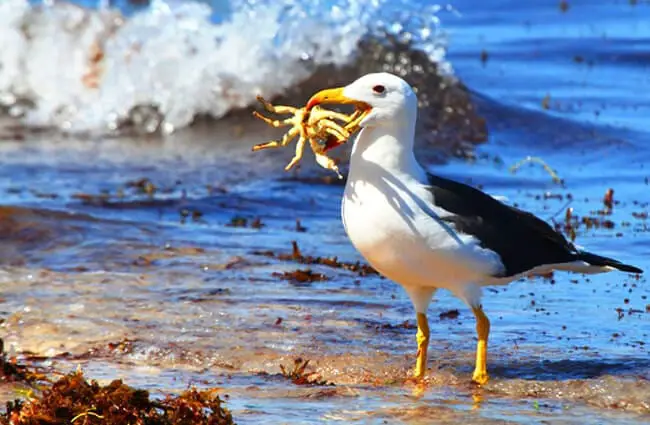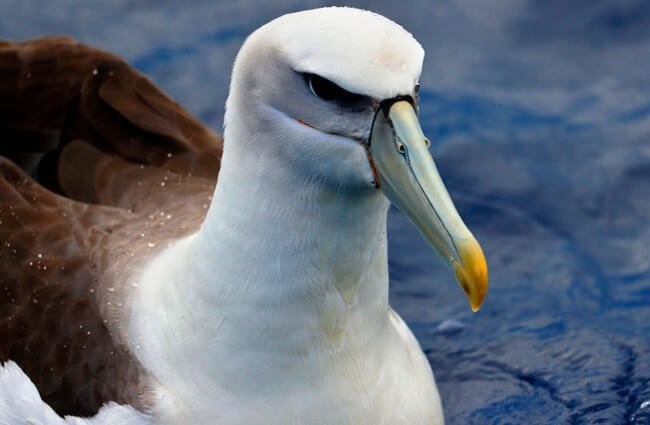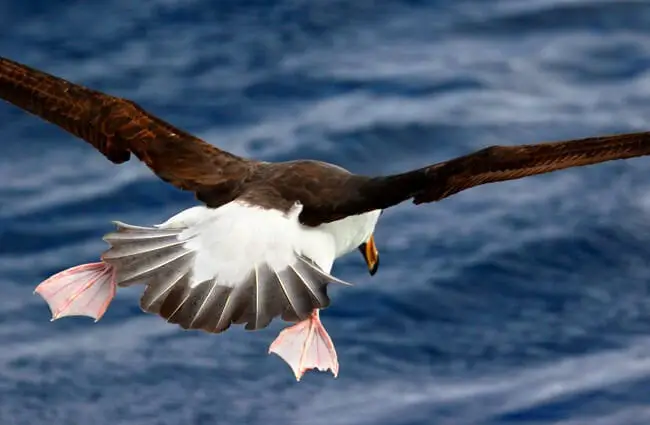The Majestic Albatross A Deep Dive into the Wanderers of the Sea
Few birds capture the imagination quite like the albatross. These magnificent creatures, masters of the air and ocean, are renowned for their immense wingspans, incredible endurance, and haunting beauty. More than just birds, albatrosses are indicators of ocean health, woven into the fabric of human culture, and represent a fascinating study in adaptation and evolution. This article explores the world of the albatross, from its natural history and behavior to its conservation status and the challenges it faces.

Understanding the Albatross Family
The term “albatross” encompasses a group of large seabirds within the family Diomedeidae. There are about 15 recognized species, varying in size, plumage, and distribution. Most species exhibit a striking contrast of white plumage with dark wings and backs. The wandering albatross Diomedea exulans holds the title of having the largest wingspan of any living bird, reaching up to 11.5 feet (3.5 meters). These birds are not simply large gulls but belong to a distinct evolutionary lineage shaped by the unique demands of a pelagic lifestyle.
Habitat and Distribution
Albatrosses are primarily found in the Southern Ocean and the North Pacific. The majority of species breed on remote subantarctic islands such as South Georgia, the Crozet Islands, and Macquarie Island. Some species, such as the Laysan and Black-footed albatrosses, breed on islands in the Hawaiian archipelago. Once fledged, they spend the vast majority of their lives soaring over the open ocean, circumnavigating the globe in search of food. Their distribution is largely dictated by the availability of prey and favorable wind patterns. They rarely come to land except to breed.
Evolutionary History
The evolutionary origins of albatrosses can be traced back to the Procellariiformes order, which includes petrels, shearwaters, and storm-petrels. Fossil evidence suggests that early albatross-like birds existed around 60 million years ago, during the Paleocene epoch. Over millions of years, these birds gradually evolved into the highly specialized seabirds we know today, adapting to exploit the resources of the open ocean. The development of dynamic soaring, a technique that allows them to gain energy from wind gradients, was a key innovation in their evolutionary success.
Life Cycle and Behavior
Albatrosses are renowned for their complex social behavior and extended breeding cycles. They are generally monogamous, forming long-term pair bonds that can last for decades.

Mating and Reproduction
Albatrosses reach sexual maturity relatively late, typically between 5 and 10 years of age. They engage in elaborate courtship rituals, involving synchronized displays of vocalizations, head movements, and bill clacking. These displays help strengthen the pair bond and assess the fitness of potential mates. The female typically lays a single egg, which both parents incubate for approximately 11 to 12 weeks. Raising a chick is a lengthy and demanding process, requiring both parents to provision the young with regurgitated food for several months. Chicks fledge, or leave the nest, after around six months, but continue to rely on their parents for several more months.
Diet and Foraging
Albatrosses are opportunistic feeders, consuming a variety of marine organisms, including fish, squid, krill, and crustaceans. They employ a range of foraging strategies, including surface feeding, diving, and scavenging. Dynamic soaring allows them to cover vast distances with minimal energy expenditure, enabling them to search for food efficiently. They often follow fishing boats, scavenging for discarded catch and bait. Some species are known to steal food from other seabirds, a behavior known as kleptoparasitism.

Social Behavior
Outside of the breeding season, albatrosses tend to be relatively solitary, but may gather in large flocks during foraging expeditions. They communicate through a variety of vocalizations, visual displays, and olfactory cues. Colonial nesting provides protection from predators and facilitates social interactions.
Albatrosses and the Ecosystem
Albatrosses play a crucial role in the marine ecosystem. They act as scavengers, helping to remove dead organisms from the water. They also contribute to nutrient cycling, transferring nutrients from the ocean depths to the surface through their foraging activities. Their guano, or droppings, provide a valuable source of nutrients for terrestrial plants and animals on breeding islands. As apex predators, they help to regulate populations of their prey.

Albatrosses and Humans
Throughout history, albatrosses have held a significant place in human culture. Sailors often viewed them as symbols of good luck, while others believed they carried the souls of deceased mariners. In Samuel Taylor Coleridge’s poem, “The Rime of the Ancient Mariner,” the albatross represents nature’s grace and the consequences of disrupting its balance. Unfortunately, human activities have had a detrimental impact on albatross populations.
Threats and Conservation
The major threats to albatrosses include bycatch in fisheries, plastic pollution, climate change, and habitat degradation. Longline fisheries, in which baited hooks are deployed on long lines, pose a significant risk of entanglement and drowning. Albatrosses often ingest plastic debris, mistaking it for food, which can lead to starvation and internal injuries. Rising sea levels and increased storm frequency due to climate change threaten their breeding habitats. Conservation efforts include implementing bycatch mitigation measures, reducing plastic pollution, and protecting breeding colonies. The Albatross Research Group is actively involved in tracking and researching the birds.

Encountering Albatrosses in the Wild
For birdwatchers and wildlife enthusiasts, observing albatrosses in their natural habitat is an unforgettable experience. The best places to see albatrosses include the subantarctic islands such as South Georgia and the Crozet Islands, and the North Pacific Ocean. Boat trips and guided tours are available in many of these locations. When observing albatrosses, it is important to maintain a respectful distance and avoid disturbing their breeding colonies.
Caring for Albatrosses in Captivity
While albatrosses are primarily wild birds, a few zoos and aquariums maintain them in captivity for research and conservation purposes. Providing appropriate care for albatrosses in captivity requires a significant commitment and specialized facilities. Large flight enclosures are essential to allow them to exercise their wings and engage in natural behaviors. A diet of fresh fish and squid should be provided, supplemented with vitamins and minerals. Regular veterinary care is crucial to ensure their health and well-being. Enrichment activities, such as providing novel objects and opportunities for social interaction, can help to stimulate their minds and prevent boredom.

The Future of the Albatross
The fate of the albatross hangs in the balance. Despite ongoing conservation efforts, many species remain threatened with extinction. Addressing the threats they face requires a concerted global effort, involving governments, fisheries, conservation organizations, and individuals. By reducing our impact on the marine environment and supporting sustainable practices, we can help ensure that these majestic birds continue to soar over the oceans for generations to come. The albatross, a symbol of freedom and resilience, deserves our protection.

![Red Angus Closeup of a beautiful Red Angus cowPhoto by: U.S. Department of Agriculture [pubic domain]https://creativecommons.org/licenses/by/2.0/](https://animals.net/wp-content/uploads/2020/03/Red-Angus-4-238x178.jpg)




![Red Angus Closeup of a beautiful Red Angus cowPhoto by: U.S. Department of Agriculture [pubic domain]https://creativecommons.org/licenses/by/2.0/](https://animals.net/wp-content/uploads/2020/03/Red-Angus-4-100x75.jpg)

